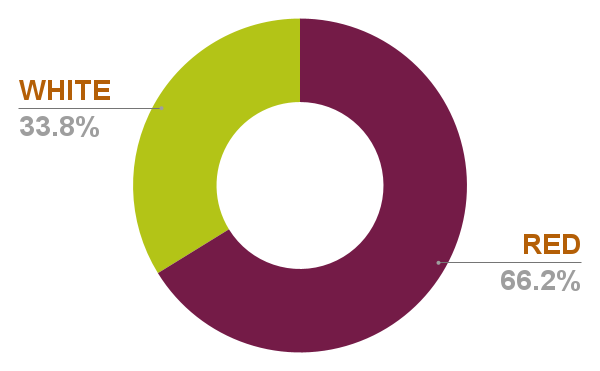By the numbers
-
1AVAs
-
40+Wineries
-
0.24%Total Plantings
-
1,083Acreage Under Vine (Acres)
-
1AVAs
-
40+Wineries
-
0.24%Total Plantings
-
438.28Acreage Under Vine (Hectares)

Overview
Temecula Valley, nested in the sprawling South Coast AVA, is Southern California’s largest wine-producing region by volume. Formally recognized in 1984 as the Temecula American Viticultural Area, it was officially renamed Temecula Valley AVA in 2004 (the only American Viticultural Area that has undergone a name change). It’s a little-known fact that Southern California was once the state’s most prolific and important winegrowing region. Although a handful of other productive pockets remain, the focus on Temecula Valley since the 1960s—and the increasing success of high-quality winemaking there—has made it one of the most significant of Southern California’s regions to know.
Located at the border of northern San Diego County and southwestern Riverside County, Temecula Valley is about 80 miles (129 km) south of Los Angeles. The 33,000-acre (13,355-hectare) valley, with about 2,500 acres (1,012 hectares) under vine, is oriented from west to east, starting about 22 miles (35 km) from the Pacific Ocean. Most of its vineyards are planted at altitudes between 1,200 and 1,600 feet (366-488 m) above sea level, and are surrounded by inland valleys and towering mountain peaks ranging from 2,000 to 11,000 feet (610-3,353 m) elevation. As you would expect in Southern California, the region enjoys warm days during the growing season, for ample sugar accumulation and ripeness. But two low-lying gaps in the Coastal Range between the valley and the ocean allow cool marine air to flow in. Adding to the cooling effect, colder air that collects at higher altitudes between the surrounding mountains flows down into and through the valley much like rivers, creating cool nights that allow the fruit to retain acidity.
Taking advantage of this Mediterranean climate, Temecula winemakers are successfully growing and producing more than two dozen seemingly disparate grape varieties, from Cabernet Sauvignon and Chardonnay to Syrah and Zinfandel. But the varieties emerging as the most successful in the region are Italian, Iberian, and Rhône.
In spite of the growing quality of winemaking here—and the range of successful varieties—the reputation of Temecula Valley’s wines has not spread as widely or as fast as that of regions to the north in California. It’s possible that the range of wines itself is partly to blame: No signature grape has emerged to build the identity of the region. Another clearer culprit (or blessing, depending on your viewpoint) is that by far the majority of wines (over 90 percent) are sold direct to consumer, in tasting rooms and to wine clubs, with very little available in normal distribution channels and at retail. Temecula Valley’s unique location, within driving distance of Los Angeles, San Diego, Orange County, Riverside, and Palm Springs—and more importantly, their 22-million inhabitants —makes the direct model viable. And local regulations, unlike many other California regions, allow wineries to establish restaurants and inns onsite, encouraging volumes of visitors as well. Temecula, then, is something of a Southern California insider secret for local wine lovers.

